Geometry implemented in the understanding of the algebraic formulation of thin lenses
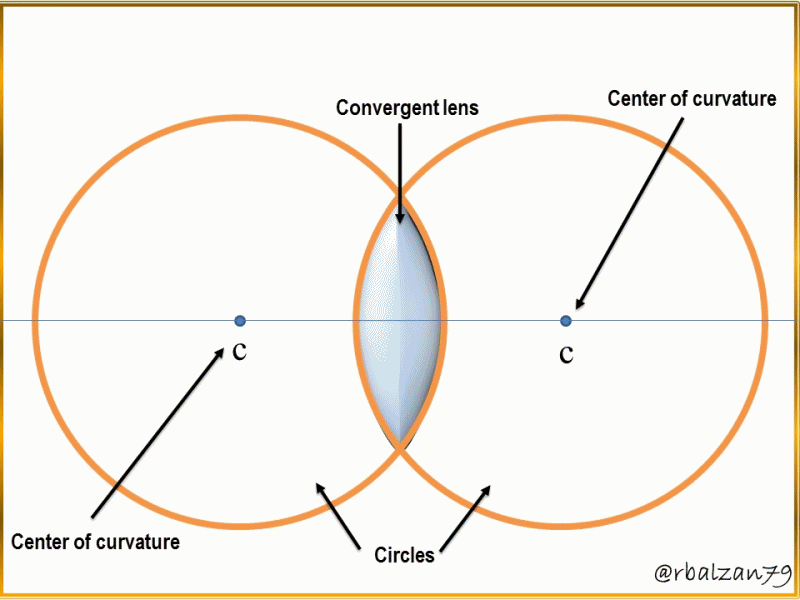
Among these formulations we find the formula of the thin lens because through it we have determined variables such as distances, both the object and the image with respect to the center of a lens, with this formula is also possible to know or determine the focal length of this optical system (lens), therefore, this time I thought it appropriate to analyze the generation of this algebraic formula of the lenses through the implementation of geometry through geometric figures that we will analyze in the course of this article.
But first, for a better understanding, here are the links to the previous publications related to this thematic series:
1.- Analysis and calculations of variables in the generation of images in a convergent lens.
2.- Calculations of variables in image generation in a diverging lens.
4.- Converging-converging lens arrangement in the optical system of a refracting telescope.
By virtue of the above, let's start using some geometric figures for the understanding of lenses, first, see how through the intersection of two circles we can draw or physically structure a convergent lens as you can see below:
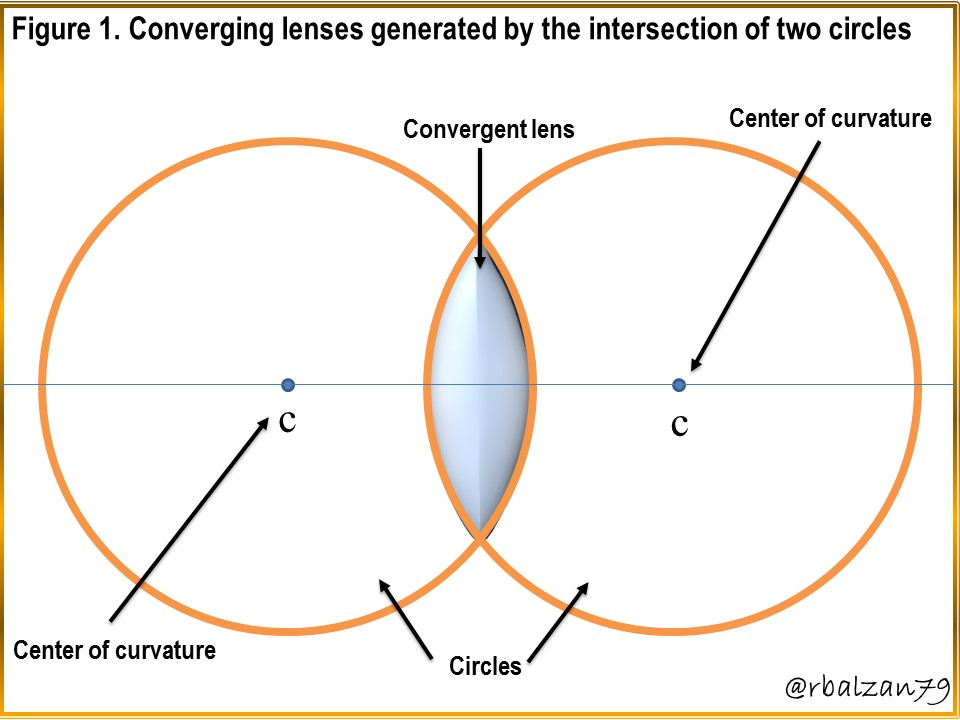
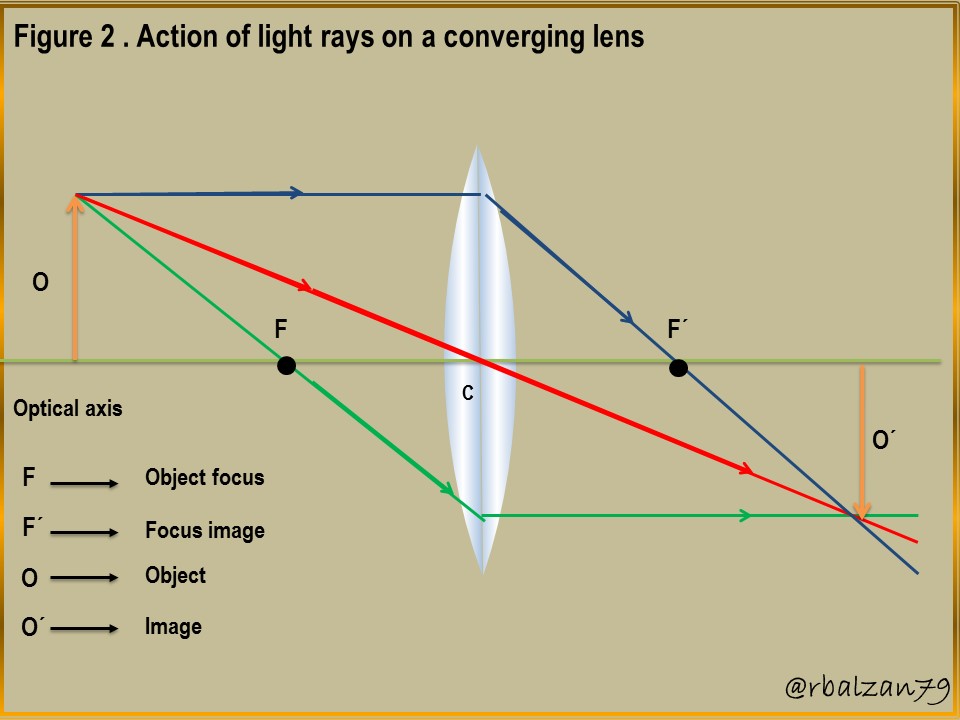
In the previous figure 1, we clearly see how by means of the intersection of the geometric figures known as circles we achieve our objective, that is to say, to draw a convergent lens, characterized by being thicker in its center and, with this, highlighting that everything that is around us has aspects endowed by geometry and its geometric figures, now, with these two geometric figures (circles) we can also create divergent lenses, let's observe how:
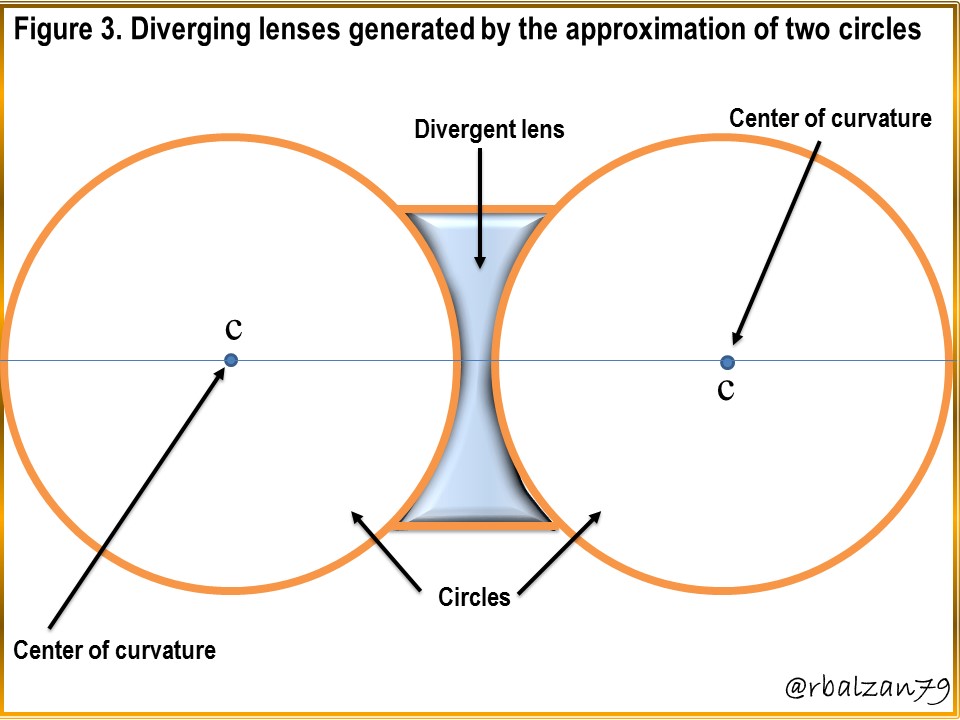
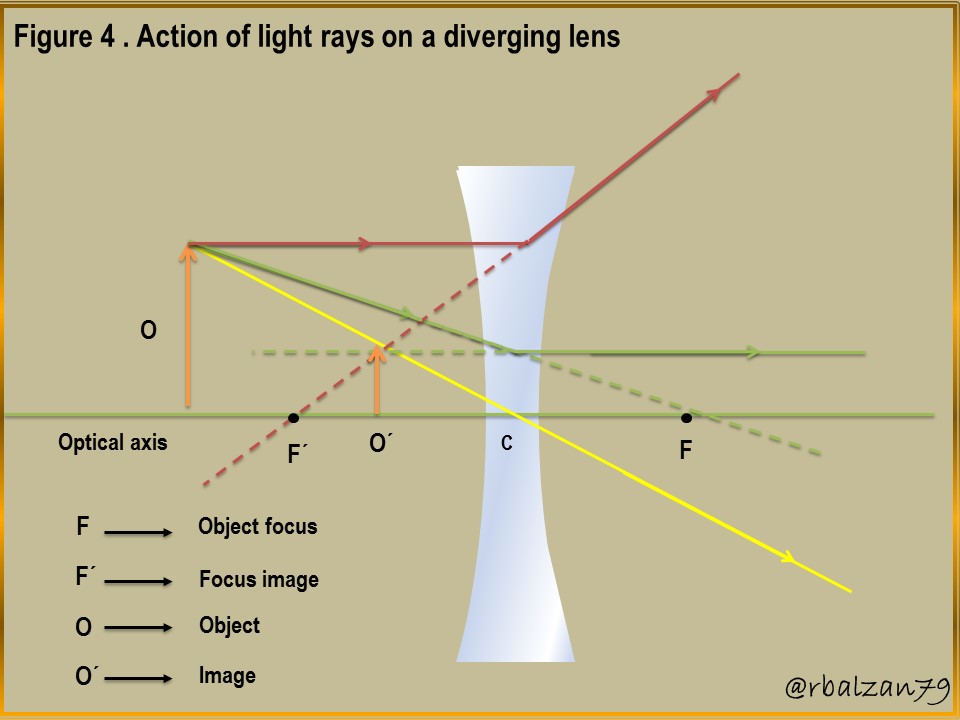
Without intercepting these geometric figures, a divergent lens was configured, characterized by being thinner in the center than at the ends, now let's see other geometric figures that will allow us to structure the algebraic equation of thin lenses, therefore, let's remember what is this formulation.

Having recalled this formula, let's move on to the following figure 5.
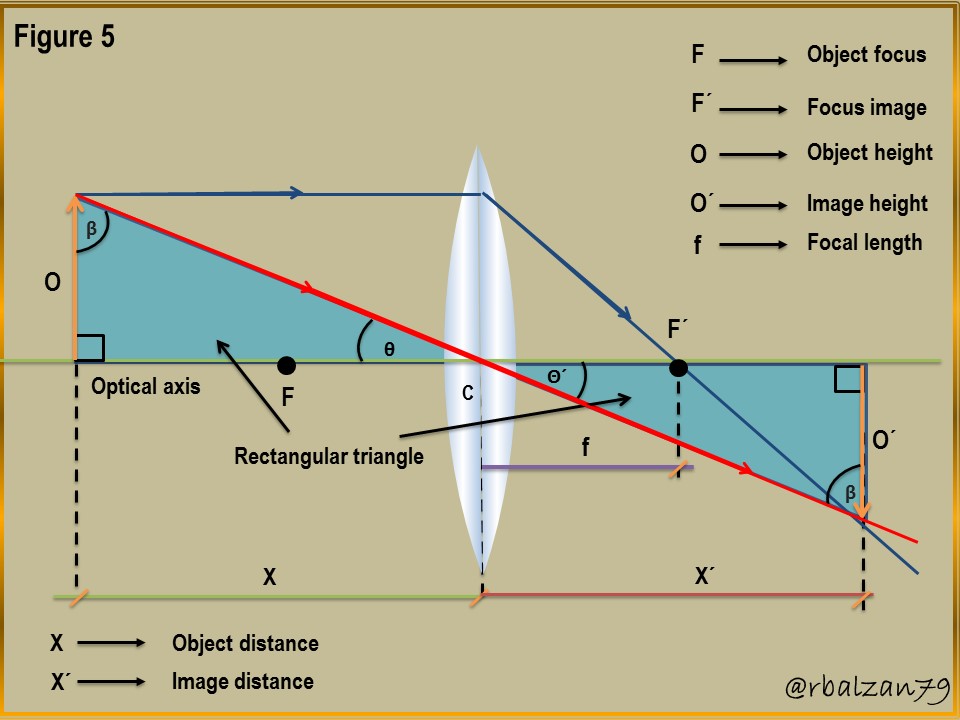
In this figure 5, you can observe two right triangles y, they are shaded in light blue color, the angles θ and θ' are opposite by the vertex and, consequently they are congruent, that is to say, with the same degree or value, y, if we have right triangles, then, they have one of the right angles, in this way, having two of its angles equal, the third angle β and β' will also be equal, therefore, they are two similar triangles because their three angles are equal.
As the two previous two right triangles are similar, then, their sides have proportionality, this characteristic is the one we are going to implement to structure the formula of the thin lenses, therefore, observe the following relationships:

Therefore, the distance from the object (X) to the lens is at the height of the object (O), as the distance from the image (X') to the lens is at the height of the image (O'), it generates a proportion between two ratios extracted from the similarity of the right triangles indicated above, now let us observe the following figure 6 with the purpose of constructing another proportionality.
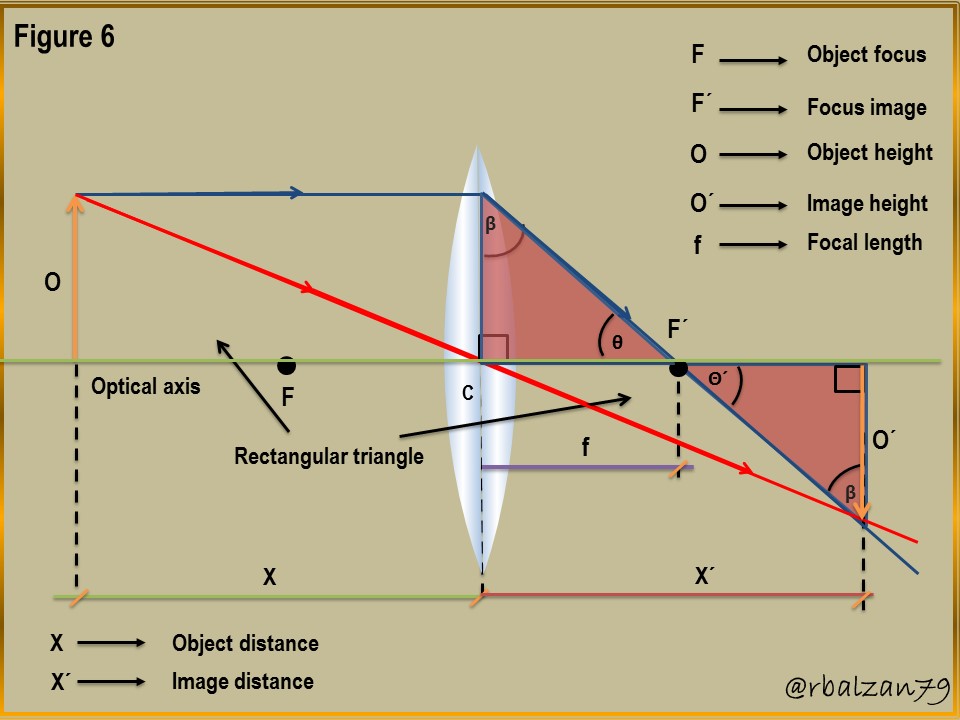
In the previous figure 6, we also observe two similar right triangles, since the three angles are congruent, that is to say, equal, this leads us to the following relationships:

In this way we have other proportionality ratios indicated above, where the focal length (f) is to the object height (O) as the image distance (X') minus the focal length (f) is to the image height (O'), in this way we seek to structure the formulation 1, that is, the one of the lenses, for this, we can invert the extremes of the proportions indicated above, as you will see next:
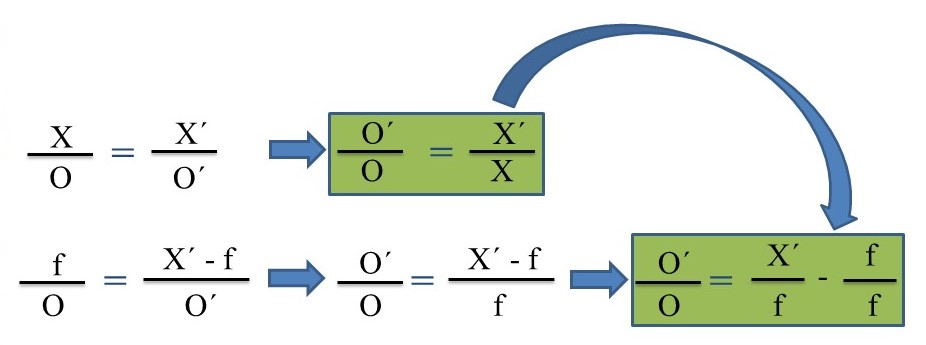
After reversing the extremes of our ratios and performing other operations, we are left with the two ratios in green, and, when equating them, we get:

In this equality we can observe a ratio f/f, which we can interpret as 1, however, we will conveniently express it as a function of the variable that is most repeated in the previous equation y, this variable is the distance from the image to the lens (X'), therefore, it is convenient to place in f/f the variables X'/X', as you can see below:
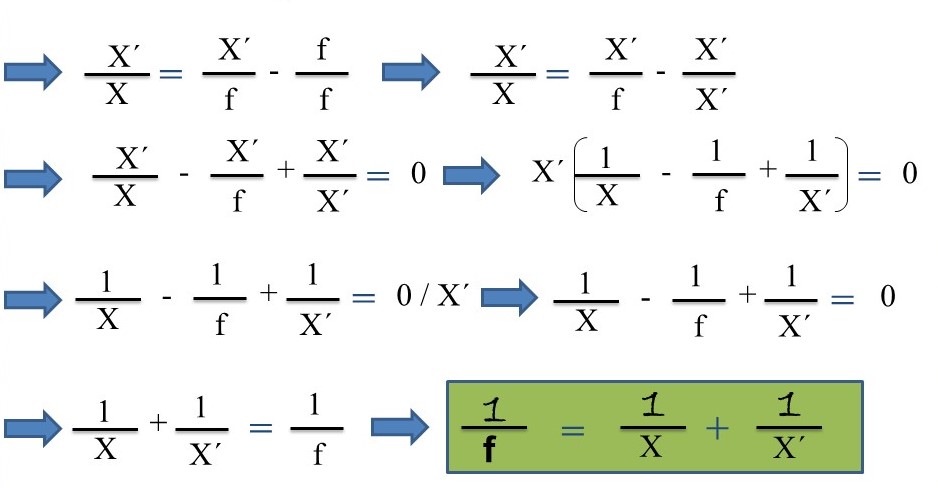
In this way we were able to structure the equation of thin lenses, the same equation that we have used in the resolution of the exercises presented in the previous articles, analyzing both convergent and divergent lenses and even the combination of them.
Conclusion
Mathematics is that universal language implemented by man through science to know and propagate any kind of learning, this time, through geometric figures we were able to structure the equation of the lenses, the same, used to understand the phenomenon of light and its action in the generation of images, this feature of geometry is possible to transfer it to any other space-time where we are.
By means of two circles we were able to configure the design of both convergent and divergent lenses, but, by means of the similarity of right triangles we were able to structure the recognized equation of the lenses as could be witnessed throughout the development of this article, we can say then, that everything we observe around us has any intrinsic characteristic of mathematics, especially geometry.
Until another opportunity my dear friends.
Note: The images were created by the author using Power Point and Paint, the animated gif using PhotoScape.
Recommended bibliographic references
[1] GEOMETRIC OPTICS. Link.
[2] Convergent lenses. Link.
[3] Lens Basics. Link.
Thanks for your contribution to the STEMsocial community. Feel free to join us on discord to get to know the rest of us!
Please consider delegating to the @stemsocial account (85% of the curation rewards are returned).
You may also include @stemsocial as a beneficiary of the rewards of this post to get a stronger support.